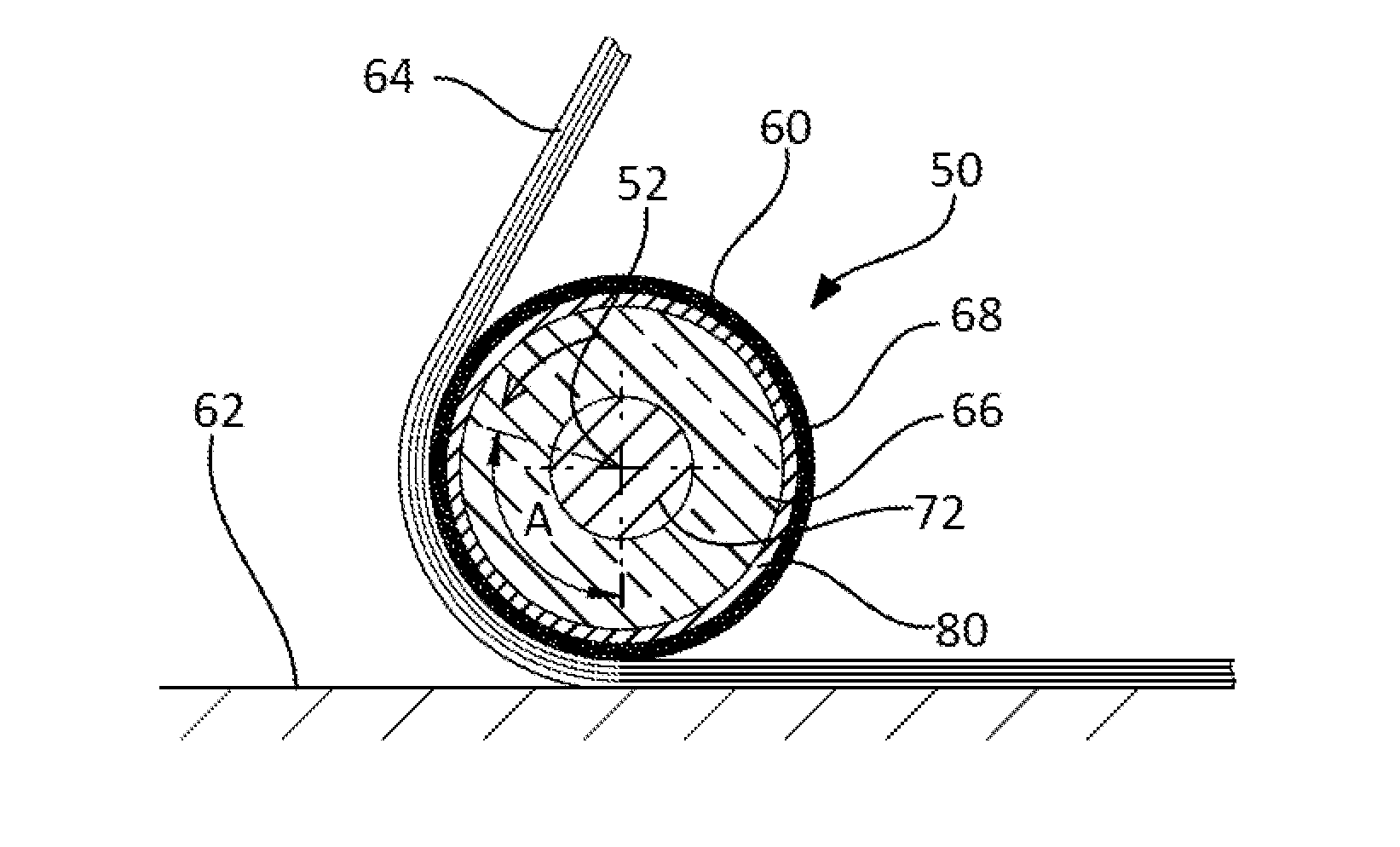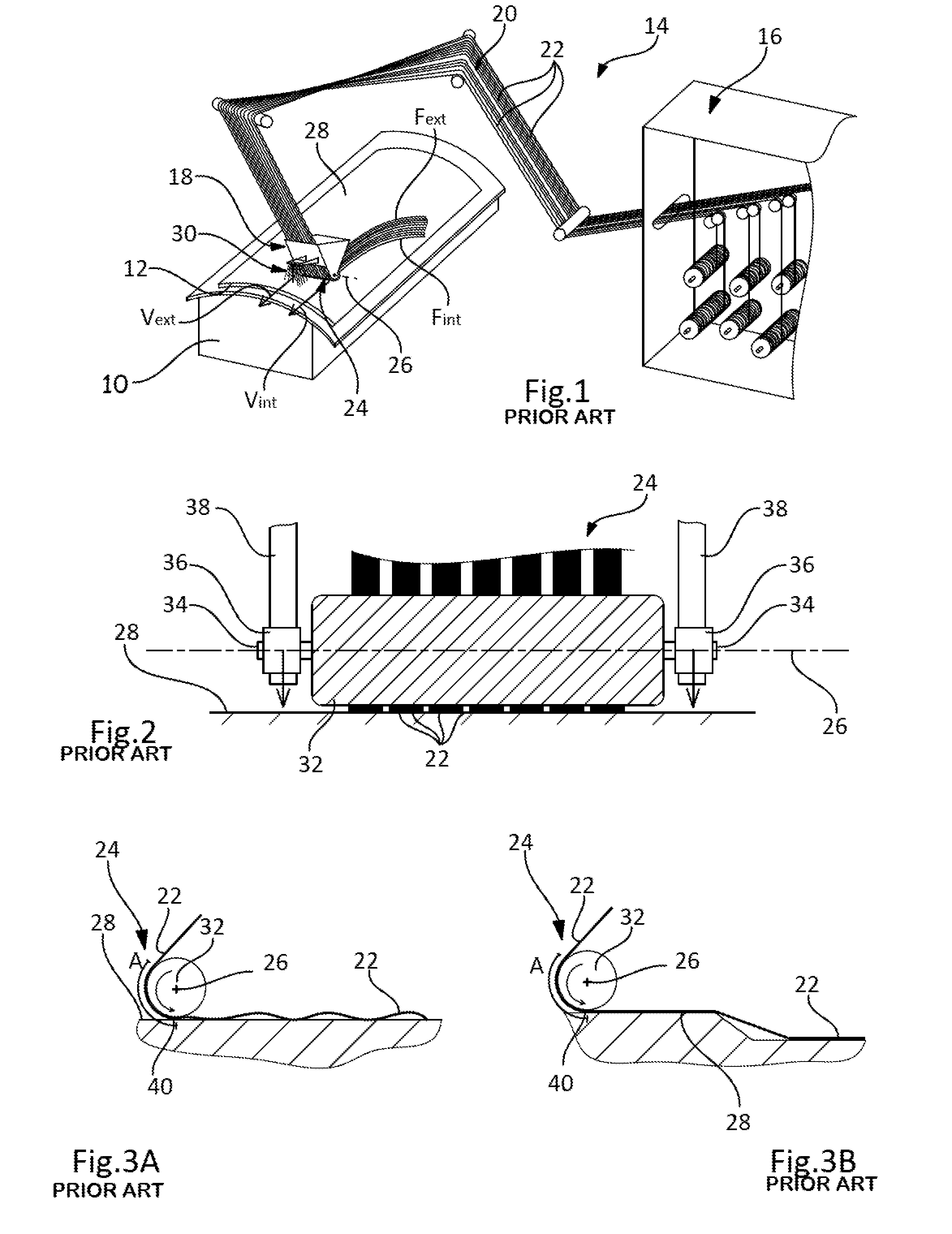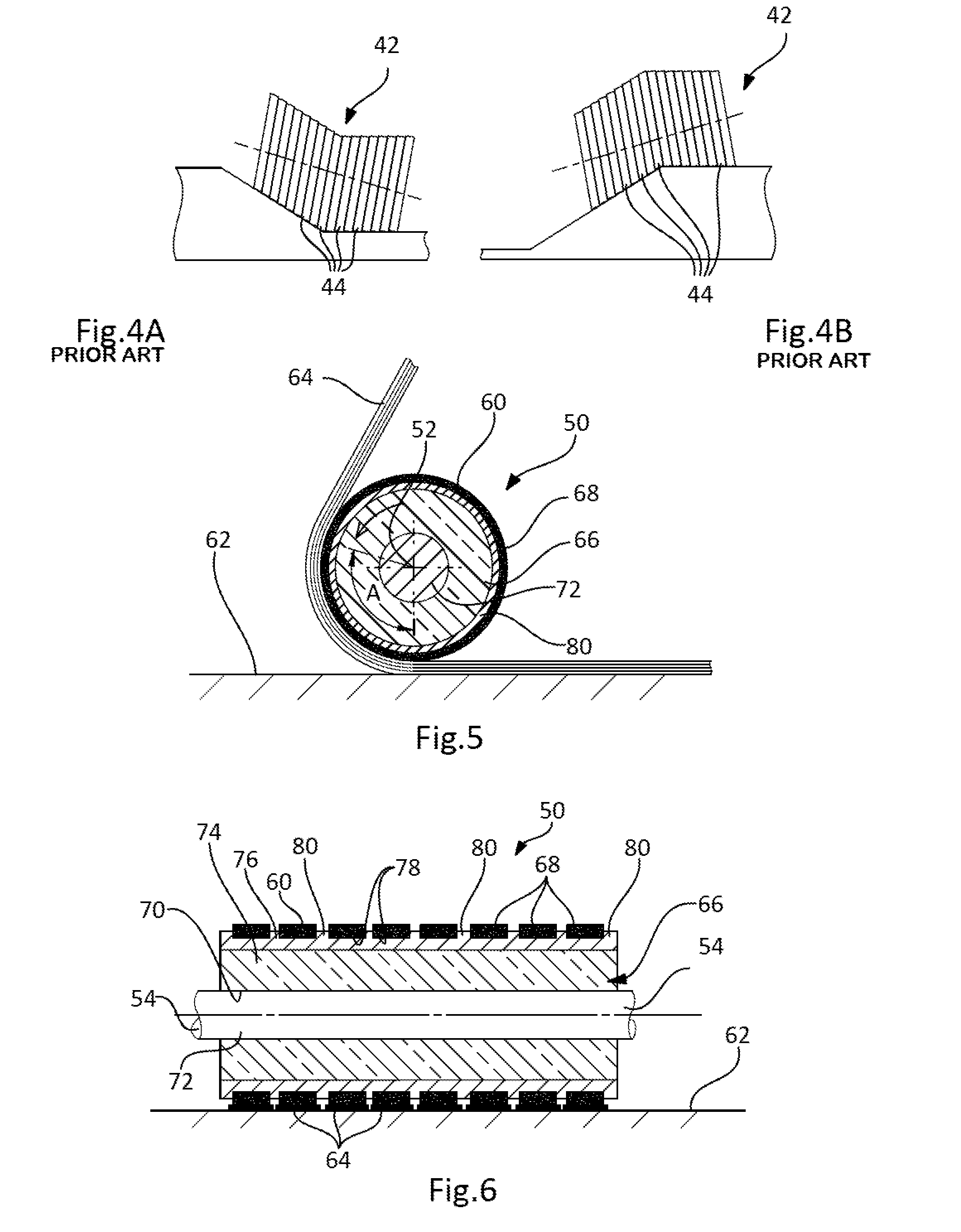Fibre laying machine comprising a roller with pivoting rings
a technology of pivoting rings and laying machines, which is applied in the direction of lap forming devices, lap winding devices, textiles and paper, etc., can solve the problems of bridging type defects, defects of wrinkling type defects, and impact on mechanical properties of components produced, so as to limit the interaction between pivoting rings
- Summary
- Abstract
- Description
- Claims
- Application Information
AI Technical Summary
Benefits of technology
Problems solved by technology
Method used
Image
Examples
Embodiment Construction
[0055]FIGS. 5 to 8 depict a roller 50 of a fibre laying machine able to pivot about an axis of rotation 52.
[0056]As in the prior art, the roller 50 comprises means for connecting it to a laying head. According to one embodiment, the roller 50 comprises at each end a stub shaft 54 pivot-mounted in a bearing of a support secured to the laying head. These guidances of the stub shafts 54 in their bearings define the axis of rotation 52. The laying machine, the connection between the roller and the laying head are not described in further detail because they are known to those skilled in the art and may be identical to those of the prior art inasmuch as the roller 50 according to an embodiment of the invention is more particularly suited to being mounted on existing fibre laying machines in place of the rollers of the prior art.
[0057]According to one embodiment, the roller 50 comprises a substantially cylindrical exterior surface 60 which can roll over an application surface 62 so as to ...
PUM
| Property | Measurement | Unit |
|---|---|---|
| width | aaaaa | aaaaa |
| temperature | aaaaa | aaaaa |
| radius | aaaaa | aaaaa |
Abstract
Description
Claims
Application Information
 Login to View More
Login to View More - R&D
- Intellectual Property
- Life Sciences
- Materials
- Tech Scout
- Unparalleled Data Quality
- Higher Quality Content
- 60% Fewer Hallucinations
Browse by: Latest US Patents, China's latest patents, Technical Efficacy Thesaurus, Application Domain, Technology Topic, Popular Technical Reports.
© 2025 PatSnap. All rights reserved.Legal|Privacy policy|Modern Slavery Act Transparency Statement|Sitemap|About US| Contact US: help@patsnap.com



